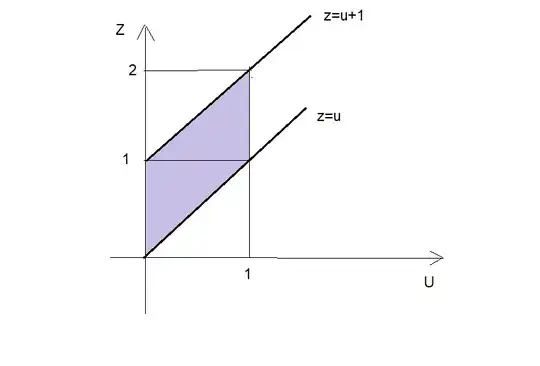The following is given: $$X,Y\ \textit{are independent}$$ $$X∼exp(1),Y∼exp(2)$$ $$Z=e^{−X}+e^{−2Y}$$ And I want to find: $$f_Z(1)=?$$ As a part of my solution I do the following: $$Z=U+V$$ where $$U=e^{−X},V=e^{−2Y}$$ Using one dimensional transformation we get: $$U∼Uni(0,1),V∼Uni(0,1)$$
Since we know that X,Y are independent we can assume the same for U,V.
In order to calculate $f_Z$ im using a convolution integral : $$\int_{-\infty}^{\infty} f_U(u) \cdot f_V(z-u)du = \int_{0}^{1} 1 \cdot 1du = 1$$ According to the solution this is not $f_Z$, could you point out where I was wrong?
